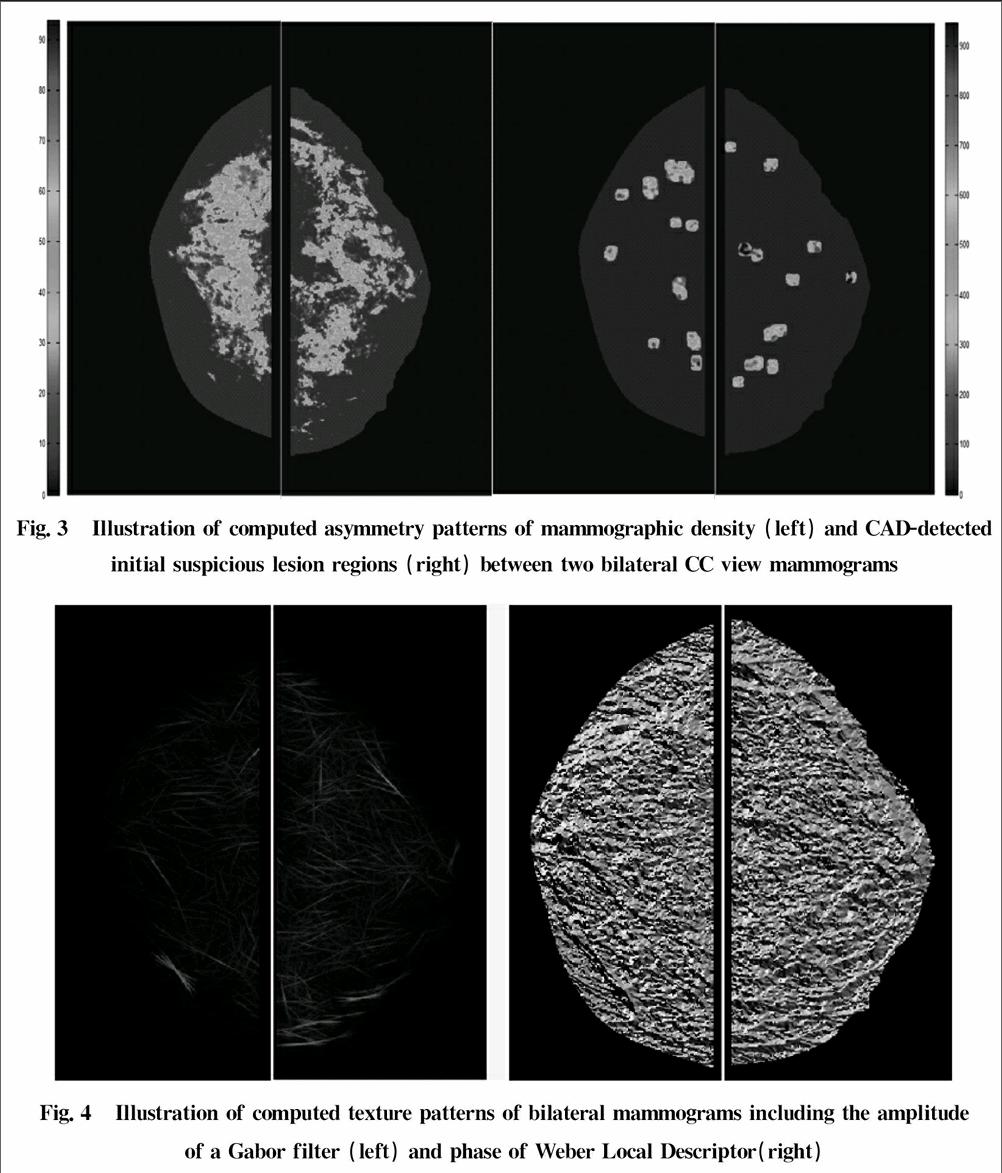图像处理和特征分析在评估乳腺癌近期发病风险中的应用
2016-07-07郑斌
郑斌



摘要: 图像处理和特征分析在乳腺癌早期诊断中发挥着重要作用。为了将一个基于左右乳腺X光片图像密度特征不对称性的图像特征分析方法应用于乳腺癌近期发病风险的预测,训练开发了一个以多图像特征相融合的人工智能分辨模型来预测每个妇女在近期(比如,在最近一次的良性检测以后2年之内)由医学影像检测出来的早期癌症的风险程度。介绍这一个新癌症风险预测模型的基本原理,演示一个新型的人机交互式的计算机辅助图像特征分析和计算的工作平台。初步实验证明,应用这一个基于医学图像特征定量分析的模型能够取得比采用现行其他已知的乳腺癌风险因子有着显著提高的对于近期乳腺癌发病风险的预测精度,这将为建立更有效的个性化乳腺癌普查提供依据和帮助。
关键词: 医学图像处理; 医学图像标志物; 乳腺X光图像特征的定量分析; 近期乳腺癌风险评估; 计算机辅助检测
中图分类号: TP751 文献标志码: A doi: 10.3969/j.issn.1005-5630.2016.03.001
文章编号: 1005-5630(2016)03-0189-11
Abstract: Medical image processing and quantitative feature analysis play an important role in accurate detection of early breast cancer.In order to apply a new image feature analysis method based on the detection of the bilateral mammographic density and tissue asymmetry to effectively predict the near-term risk of the individual women developing breast cancer,our research group recently developed and tested a new multiple image feature based model to predict the risk or likelihood of a woman having or developing an image detectable early breast cancer in the near-term (i.e.,within the 2 years after a negative mammography screening).In this review paper,we introduce the basic concept of this new image feature based risk prediction model,and demonstrate a graphic user interface (GUI) platform of interactively applying this new risk prediction model to process negative screening mammograms.Our preliminary testing results using several image datasets have demonstrated that applying this new risk prediction model could yield significantly higher discriminatory power in predicting near-term breast cancer risk than using other existing breast cancer risk factors and prediction models.If successful,applying our new model has potential to help establish a new and more effective personalized breast cancer screening paradigm in the future.
Keywords: medical image processing; medical image markers; quantitative mammographic image feature analysis; near-term breast cancer risk prediction model; computer-aided detection (CAD)
Introduction
Medical imaging using X-ray,ultrasound,magnetic resonance and other imaging modalities plays a critical role in many diseases including cancer screening,detection,diagnosis,and prognosis or treatment efficacy evaluation.However,accurately and consistently reading and interpreting medical images by the radiologists still faces a number of challenges in the clinical practice due to the large inter-reader variability and lack of quantitative assessment capability.Hence,developing computer-aided image processing and quantitative image feature analysis methods has been attracting extensive research interest in medical imaging fields.This review article introduces and discusses an example of applying a new computer-aided X-ray mammographic image processing scheme to build a unique near-term breast cancer risk prediction model,which aims to help improve efficacy of breast cancer screening.
